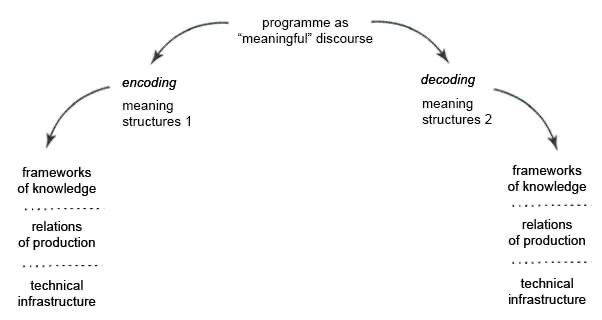The encoding – decoding model was originally defined by Stuart Hall. It was first published in Culture, Media, Language in 1980 and appeared in the book “Melia Studies”

This is a model of communication. Meaning and Messanges being organized through codes
Looking at the plate above, let’s take a closer look at the example of discourse for better understanding. That is, when creators make a television program, they want to give the community a message that they need to do certain things to achieve that. That’s why it’s called discourse.
What is the difference between encoding and decoding?
Encoding:
- Production and sending of information: When the sender generates and sends information
- Encoding: Information is converted into a code that is intended for transmission
- Transfer: The coding information is sent to another system.
- Examples: podcasters, media company, content creator
Desoding:
- Receiving information: Another system or person receives encoded information
- Desoding: The received information is converted into an encoded format into an understandable one
- Understanding: The system understands the received information and can now interact with it
- Examples: audience, consumer, reader, viewer
Barlibo (2020) Stuart Hall’s Encoding/Decoding Model but it’s easier to understand, YouTube


Hi! Very good blog, I loved the inclusion of the youtube clip to make the blog post more interactive! It’s inspiring to see how ideas take shape, transforming into a language that can be encoded, shared, and then decoded by others.